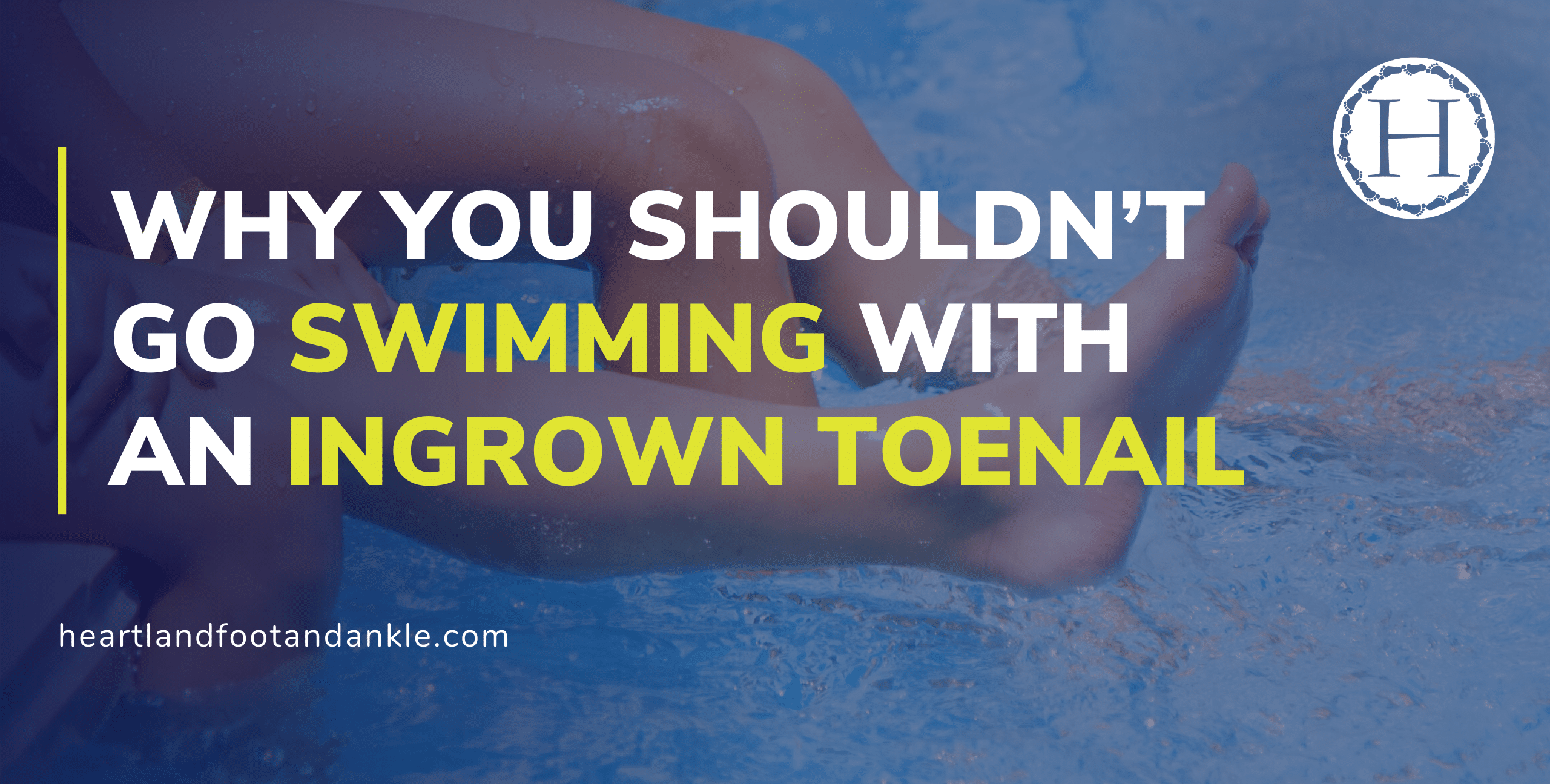Why You Shouldn’t Go Swimming with an Ingrown Toenail (or Any Other Foot Sore)
Several years ago, there was a shocking story of what can happen when even a small open wound is exposed to a dangerous micro-organism.
In 2012, a 24-year-old woman from Georgia named Aimee Copeland cut her leg after falling from a zipline she and some friends were using during a lakeside camping trip. Only a few days later, doctors were scrambling to save her life.
The lake was harboring a flesh-eating bacteria, and the break in her skin allowed it to enter. She developed necrotizing fasciitis—“flesh-eating disease”—and eventually both hands, her right foot, and her entire left leg had to be amputated to save her life.
The Link to Podiatry
While this is a clearly sad and scary story, you might be wondering what it has to do with foot care—or with you.
Here’s the connection:
Feet, more so than most other parts of the body, are susceptible to all kinds of cuts, sores, and breaks in the skin. Ingrown toenails are a great example of this, as are things like puncture wounds, burst blisters, diabetic ulcers, or even severely cracked and fissured skin.
You also may be more likely to ignore “minor” nicks and scrapes on your feet than you might if they occurred elsewhere, especially if they are not severely painful (or you have a condition, such as neuropathy, that limits your ability to feel pain in your extremities).
If you then expose that open cut or sore to a potential source of infection—for example, lake bacteria—you could very quickly develop a very serious problem.

Am I Really at Risk?
Certainly, we don’t want to terrify you. Aimee Copeland’s story about amputation and flesh-eating bacteria is an extreme example of what can happen in an (almost) worst case scenario.
But you don’t necessarily have to develop necrotizing fasciitis to experience some very unfortunate consequences. You might not encounter a flesh-eating bacteria, but other kinds of micro-organisms that live in open bodies of water can still make you very, very sick if they get into your body through an ingrown toenail or other open sore. Vomiting, diarrhea, chills, severe abdominal pain—none of which sound especially pleasant!
In general, your risk is highest in open water (lakes, rivers, etc.), especially when the water is nice and warm. It is especially important that you stay out of these natural bodies of water if you have an ingrown toenail or other open sore or wound.
Pools tend to be much safer since chemicals like chlorine and bromine tend to kill off any bacteria that could pose an issue—but that still doesn’t necessarily mean swimming with an open wound is the best decision there, either!
In either case, we strongly advise you to give our office a call if you have any concerning foot problems or sores that aren’t healing.
Don’t Let an Ingrown Toenail (or Other Skin or Nail Problem) Ruin Your Summer!
We thought, before we sign off on this blog post, we’d share something a little more uplifting.
Aimee Copeland’s story didn’t end after becoming a quadruple amputee. She completed her first master’s degree (then added a second one) and became a licensed master social worker. In addition to her therapy and counseling work, she also founded the Aimee Copeland Foundation, an organization that provides counseling services as well as accessible outdoor recreational opportunities for those with physical, mental, and developmental disabilities.
That all being said, things could have easily turned out a lot worse.
If you have an ingrown toenail or any other type of break in your skin, please do not go swimming. Instead, please give us a call at (309) 661-9975. We are happy to take a look and help you heal, so you can safely enjoy summer to its fullest!
